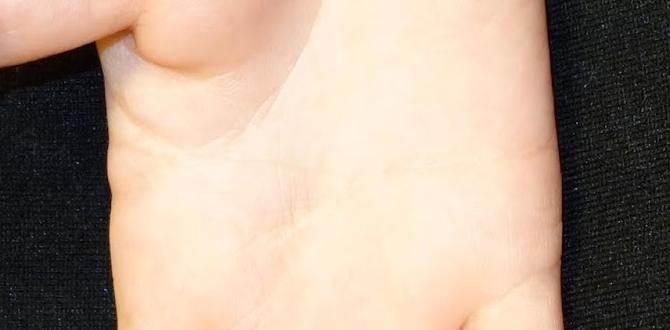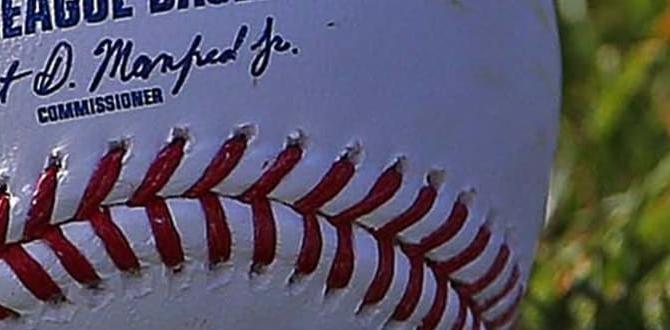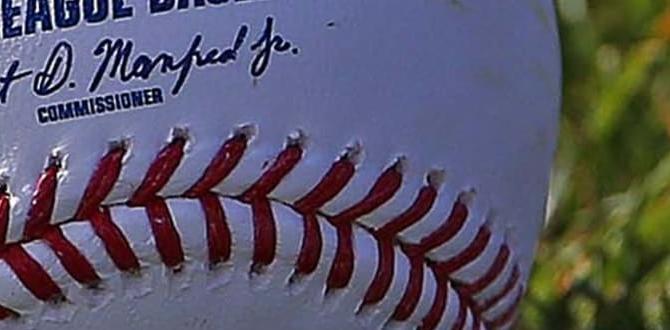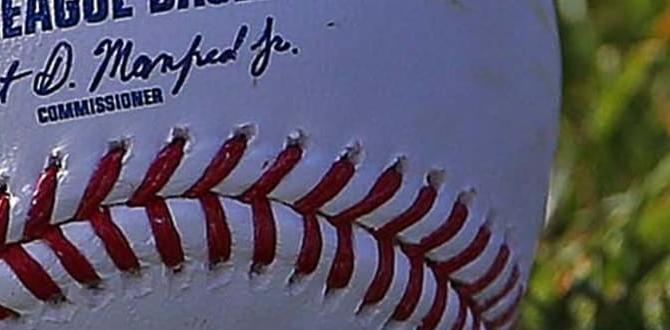Baseball fans often hear terms that can be confusing. Ever wondered what “whip” stands for in baseball? This little word packs a big punch when it comes to understanding a player’s performance.
Imagine your favorite pitcher throwing a game-winning strike. What if you could measure their success with just one statistic? That’s where whip comes in. It helps fans know how well a pitcher is doing.
Did you know that whip stands for walks plus hits per inning pitched? It sounds simple, but it tells a powerful story about a player. A lower whip means the pitcher is getting batters out and not allowing too many runners on base.
So next time you enjoy a baseball game, remember this fun fact. Understanding whip might just make you appreciate the game a little more!
What Does Whip Stand For In Baseball: A Complete Guide

What Does WHIP Stand for in Baseball?
In baseball, WHIP stands for Walks and Hits per Inning Pitched. It measures how many base runners a pitcher allows for each inning. Think of it like a report card for pitchers. A low WHIP means a pitcher is doing well by not letting many players on base. Did you know that top pitchers often have a WHIP below 1.00? Understanding WHIP can help fans appreciate the skill of their favorite players!Definition of WHIP
Explanation of the WHIP acronym (Walks plus Hits per Inning Pitched). Importance of WHIP as a pitching statistic.WHIP means “Walks plus Hits per Inning Pitched.” It shows how many runners reach base while a pitcher is on the mound. A lower WHIP means a pitcher is better, letting fewer players reach base. This statistic helps teams know who pitches well and can win games. Fans also enjoy tracking it to see who’s performing best.
- Walks: The number of times a batter gets to walk to first base.
- Hits: The total hits the pitcher allows.
- Innings Pitched: The number of innings a pitcher plays in a game.
Why is WHIP important in baseball?
WHIP is important because it helps measure a pitcher’s effectiveness. The lower the WHIP, the better the pitcher. This shows how well they prevent runs and help their team win.
Calculating WHIP
Stepbystep formula for calculating WHIP. Examples showcasing the calculation.To find WHIP, use this simple formula: WHIP = (Walks + Hits) / Innings Pitched. Think of it as a math problem that helps to measure a pitcher’s performance. Grab your pencil and let’s calculate! If a pitcher has 10 hits and 5 walks over 15 innings, you’d add the hits and walks: 10 + 5 = 15. Then, divide this by innings pitched: 15 / 15 = 1.0! Easy as pie, right?
| Pitcher | Hits | Walks | Innings Pitched | WHIP |
|---|---|---|---|---|
| John Doe | 10 | 5 | 15 | 1.0 |
| Jane Smith | 8 | 3 | 12 | 0.92 |
It’s like figuring out how many runs you’d let your friends score while playing kickball. Keep it low, and you’ll be the MVP in no time!
Significance of WHIP in Player Evaluation
How WHIP influences a pitcher’s performance assessment. Comparison of WHIP with other pitching statistics.Understanding a pitcher’s stats can feel like solving a puzzle. WHIP, which stands for Walks and Hits per Innings Pitched, plays a big part in evaluating a player. Think of it as a secret sauce: it helps teams see how well a pitcher controls the game. A lower WHIP means fewer runners on base and a higher chance of striking out batters. Comparatively, it offers a clearer picture than just ERA (Earned Run Average), which sometimes feels as mysterious as grandma’s cookie recipe! Here’s a quick look:
| Statistic | Definition |
|---|---|
| WHIP | Walks + Hits / Innings Pitched |
| ERA | Earned Runs Allowed / Innings Pitched |
In short, WHIP gives a straightforward view of a pitcher’s effectiveness, while other stats can sometimes be like trying to find a needle in a haystack!
Historical Context of WHIP
Origin of the WHIP statistic in baseball analysis. Evolution of WHIP over the decades.The WHIP statistic in baseball traces back to the early days of the game. It was created to measure how well pitchers kept runners off the bases. The formula combines walks and hits allowed, dividing that total by innings pitched. Over the decades, its popularity grew as fans and experts wanted a clearer way to evaluate pitchers. Instead of guessing, they could now count. Imagine only two or three players in a candy store! That’s how tight games feel!
| Decade | WHIP Evolution |
|---|---|
| 1970s | Introduction of WHIP |
| 1990s | Increased use in analysis |
| 2000s | Popular among fans |
Impact of WHIP on Game Strategy
Influence of WHIP on team decisions during games. Usage of WHIP in drafting and trading pitchers.WHIP can shake up game strategies like a good dance move! Coaches use it to decide who pitches during the game. A low WHIP means a player is great at keeping runners off base. This makes teams want to draft or trade for those star pitchers. Think of it as team matchmaking but with baseball players. High WHIP players? They might just be the last picked in dodgeball! Teams look for pitchers who can help win games, falling in love with those cool stats.
| WHIP Value | Pitcher Type | Team Decision |
|---|---|---|
| Below 1.00 | Elite | Draft/Trade Target |
| 1.00 – 1.30 | Solid | Consider |
| Above 1.30 | Struggling | Pass |
Common Misconceptions about WHIP
Clarifying myths regarding WHIP and its interpretations. The difference between WHIP and other related metrics.Many people think WHIP is a magic potion for pitchers, but it’s just a stat! WHIP means “Walks plus Hits per Inning Pitched.” Some confuse it with ERA, but they’re not twins. WHIP shows how many runners a pitcher lets on base, while ERA tracks runs that score. Check out the table below for a better look at how WHIP stacks against other metrics:
| Metric | Description |
|---|---|
| WHIP | Walks + Hits / Innings Pitched |
| ERA | Earned Runs / Innings Pitched |
| FIP | Fielding Independent Pitching |
Remember, WHIP measures how many are on base, so a high number means trouble—like a bee in your soda! And there you have it, the facts without the fluff!
How to Improve WHIP as a Pitcher
Tips and techniques for pitchers to lower their WHIP. Importance of control and command in pitching.Lowering your WHIP is like turning a wild horse into a smooth ride. Start by working on your control—aim for the strike zone and watch those walks disappear! Practice different pitches, but make sure they’re easy to hit, not easy to miss. Focus on your command; know where each pitch will land. It’s like aiming a water balloon—nobody wants a splash fight, right? Regular drills can make a world of difference. Keep those batters guessing!
| Tip | Technique |
|---|---|
| Control | Aim for the strike zone |
| Command | Know where your pitches go |
| Practice | Regular drills |
Resources for Further Learning about WHIP
Recommended books and articles for deeper understanding. Online tools and websites for analyzing WHIP and other stats.If you want to learn more about WHIP in baseball, there are many resources available. Here are some great options:
- **Books:** Check out “Baseball Statistics for Beginners” for clear explanations.
- **Articles:** Look for articles on sports websites like ESPN for up-to-date stats.
- **Websites:** Use sites like FanGraphs and Baseball Reference for in-depth analysis.
- **Online Tools:** Try Stathead for comparing player statistics!
These resources can help you understand the game’s numbers better!
What books can help me understand WHIP better?
Some great books include “The New Bill James Historical Baseball Abstract” and “Baseball Prospectus.” These are filled with useful insights about WHIP and other stats.
Conclusion
In baseball, “WHIP” stands for walks plus hits per inning pitched. It measures a pitcher’s effectiveness. A lower WHIP means the pitcher is doing well. You can track WHIP to understand a player’s performance better. Next time you watch a game, pay attention to this stat! For more fun facts about baseball, keep exploring and learning.FAQs
What Does The Acronym Whip Represent In Baseball Statistics, And How Is It Calculated?WHIP stands for Walks and Hits per Inning Pitched. It shows how many runners a pitcher allows on base. We calculate WHIP by adding the number of walks and hits a pitcher gives up. Then, we divide that total by the number of innings the pitcher has thrown. A lower WHIP means the pitcher is doing well!
How Does Whip Serve As A Measure Of A Pitcher’S Effectiveness During Games?WHIP stands for Walks and Hits per Inning Pitched. It shows how many runners get on base when a pitcher throws. A low WHIP means the pitcher is good at not letting people reach base. If a pitcher has a high WHIP, it means they are allowing too many walks and hits. So, we can use WHIP to see how effective a pitcher is during a game.
What Is Considered A Good Whip Statistic For Starting Pitchers In Major League Baseball?A good WHIP means “Walks and Hits per Inning Pitched.” For starting pitchers, a WHIP under 1.20 is considered really good. This means they allow fewer runners on base. The lower the number, the better they are at stopping hits and walks. So, if you watch a game, look for pitchers with a low WHIP!
How Can Whip Be Used In Conjunction With Other Pitching Metrics To Evaluate A Pitcher’S Performance?WHIP stands for Walks and Hits per Inning Pitched. You can use WHIP with other stats to see how well a pitcher does. For example, you can look at WHIP along with strikeouts and earned run average (ERA). This helps you understand if a pitcher is good at getting batters out and not letting runs score. Using these numbers together gives a clearer picture of how a pitcher is performing.
Are There Any Notable Pitchers In Baseball History With Exceptional Whip Records, And What Impact Did This Have On Their Careers?Yes, some famous pitchers have very low WHIP, which stands for Walks plus Hits per Inning Pitched. For example, Pedro Martinez and Mariano Rivera are great examples. Their low WHIP means they let very few runners get on base. This helped them win many games and earn awards. A good WHIP can really make a pitcher stand out in baseball!
{“@context”:”https://schema.org”,”@type”: “FAQPage”,”mainEntity”:[{“@type”: “Question”,”name”: “What Does The Acronym Whip Represent In Baseball Statistics, And How Is It Calculated? “,”acceptedAnswer”: {“@type”: “Answer”,”text”: “WHIP stands for Walks and Hits per Inning Pitched. It shows how many runners a pitcher allows on base. We calculate WHIP by adding the number of walks and hits a pitcher gives up. Then, we divide that total by the number of innings the pitcher has thrown. A lower WHIP means the pitcher is doing well!”}},{“@type”: “Question”,”name”: “How Does Whip Serve As A Measure Of A Pitcher’S Effectiveness During Games? “,”acceptedAnswer”: {“@type”: “Answer”,”text”: “WHIP stands for Walks and Hits per Inning Pitched. It shows how many runners get on base when a pitcher throws. A low WHIP means the pitcher is good at not letting people reach base. If a pitcher has a high WHIP, it means they are allowing too many walks and hits. So, we can use WHIP to see how effective a pitcher is during a game.”}},{“@type”: “Question”,”name”: “What Is Considered A Good Whip Statistic For Starting Pitchers In Major League Baseball? “,”acceptedAnswer”: {“@type”: “Answer”,”text”: “A good WHIP means Walks and Hits per Inning Pitched. For starting pitchers, a WHIP under 1.20 is considered really good. This means they allow fewer runners on base. The lower the number, the better they are at stopping hits and walks. So, if you watch a game, look for pitchers with a low WHIP!”}},{“@type”: “Question”,”name”: “How Can Whip Be Used In Conjunction With Other Pitching Metrics To Evaluate A Pitcher’S Performance? “,”acceptedAnswer”: {“@type”: “Answer”,”text”: “WHIP stands for Walks and Hits per Inning Pitched. You can use WHIP with other stats to see how well a pitcher does. For example, you can look at WHIP along with strikeouts and earned run average (ERA). This helps you understand if a pitcher is good at getting batters out and not letting runs score. Using these numbers together gives a clearer picture of how a pitcher is performing.”}},{“@type”: “Question”,”name”: “Are There Any Notable Pitchers In Baseball History With Exceptional Whip Records, And What Impact Did This Have On Their Careers? “,”acceptedAnswer”: {“@type”: “Answer”,”text”: “Yes, some famous pitchers have very low WHIP, which stands for Walks plus Hits per Inning Pitched. For example, Pedro Martinez and Mariano Rivera are great examples. Their low WHIP means they let very few runners get on base. This helped them win many games and earn awards. A good WHIP can really make a pitcher stand out in baseball!”}}]}






